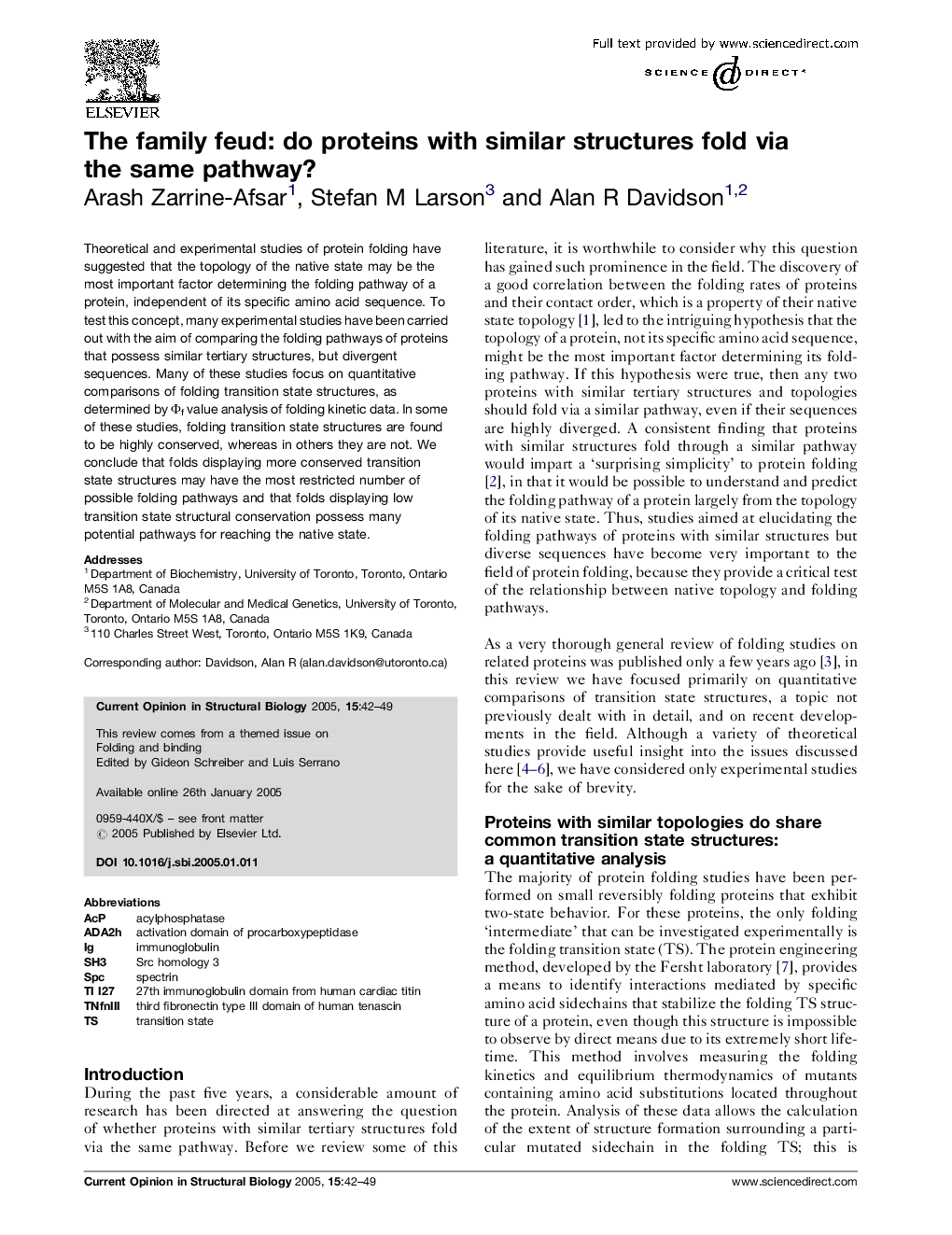| Article ID | Journal | Published Year | Pages | File Type |
|---|---|---|---|---|
| 10822881 | Current Opinion in Structural Biology | 2005 | 8 Pages |
Abstract
Theoretical and experimental studies of protein folding have suggested that the topology of the native state may be the most important factor determining the folding pathway of a protein, independent of its specific amino acid sequence. To test this concept, many experimental studies have been carried out with the aim of comparing the folding pathways of proteins that possess similar tertiary structures, but divergent sequences. Many of these studies focus on quantitative comparisons of folding transition state structures, as determined by Φf value analysis of folding kinetic data. In some of these studies, folding transition state structures are found to be highly conserved, whereas in others they are not. We conclude that folds displaying more conserved transition state structures may have the most restricted number of possible folding pathways and that folds displaying low transition state structural conservation possess many potential pathways for reaching the native state.
Related Topics
Life Sciences
Biochemistry, Genetics and Molecular Biology
Biochemistry
Authors
Arash Zarrine-Afsar, Stefan M Larson, Alan R Davidson,
